Search results for: Marketing Communication Mix
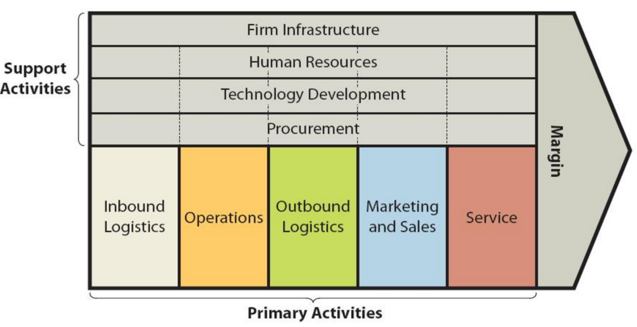
British Airways value chain analysis involves the adoption of a systematic approach in the analysis of competitive advantage. The framework makes a distinction between primary and support business activities identifies the sources of competitive advantage for each activity. The figure below illustrates the essence of value chain analysis. Primary Activities Inbound logistics British Airways inbound logistics operations are complex and involve the timely delivery of fleet of planes, catering products and a wide range of other on-board products. The necessity to ensure the freshness of foods and drinks served during the flights further complicates British Airways inbound logistics primary activities. Competitive advantage is achieved in inbound logistics stage of the business by British Airways through establishing on-going relationships with suppliers, sophisticated system for stock control and professional training that has been accredited by UK City and Guilds. Operations Generally, operations stage of the business involves preparing goods and services to be sold to customers. As the UK’s largest international scheduled airline, British Airways flies globally to more than 400 destinations. Therefore, the scope of its business operations is extensive. British Airways has a range of competitive advantages in operations part of the business through offering its customers increased security for their luggage, offering quick check-in services and also offering some services such as ticket bookings and online booking of other services. Moreover, a high level of customization of service provision and an extensive utilization of digital technologies in a wide range of business processes represent solid sources for additional value for British Airways. Outbound logistics Outbound logistics involves sending ready products to customers for consumption. Although outbound logistics mainly relate to manufacturing companies, it is also applicable towards service businesses such as airlines. British Airways flies to airports in nearly 80 countries worldwide. The airline derives value in outbound…
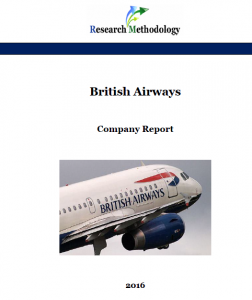
British Airways (BA) is the largest airline company in the UK and it flies globally to more than 400 destinations to airports in nearly 80 countries. British Airways is a part of International Airline Group (IAG) that also owns three other airline brands – Aer Lingus, Iberia and Vueling. The Group also owns 13.55 per cent of the equity of IB OpCo Holding S.L. (“Iberia”) and 86.26 per cent of the equity of Avios Group (AGL) Limited (“AGL”). IAG made a record profit of GBP 1,264 million in 2015. By the end of 2015, British Airways had 39,304 employees globally (Annual Report, 2015). British Airways pursues service differentiation business strategy and differentiates its services via an extensive reliance on digitalization and information technology and high level of customization of service provision. These points represent solid sources of British Airways’ competitive advantage. Major weaknesses related to British Airways include an overdependence on the UK market and low profitability of business operations. At the same time, the airline is presented with the opportunities of forming strategic cooperation with other businesses in airline and catering industries, further engaging in international market expansion and benefiting from synergy via closer integration between IAG’s operating airlines. British Airways Report contains the application of the major analytical strategic frameworks in business studies such as SWOT, PESTEL, Porter’s Five Forces, Value Chain analysis and McKinsey 7S Model on British Airways. Moreover, the report contains analyses of British Airways’ business strategy, leadership and organizational structure and its marketing strategy. The report also discusses the issues of corporate social responsibility. 1. Introduction 2. Business Strategy 3. Leadership 4. Organizational Structure 5. SWOT Analysis 5.1 Strengths 5.2 Weaknesses 5.3 Opportunities 5.4 Threats 6. PESTEL Analysis 6.1 Political Factors 6.2 Economic Factors 6.3 Social Factors 6.4 Technological Factors 6.5 Environmental Factors 6.6…
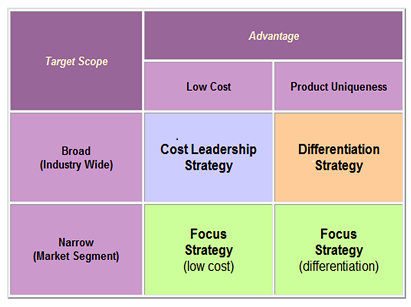
Executive Summary This article represents a business plan sample for Product Placement Opportunities®, a marketing services company that provides a platform for medium sized businesses to engage in product placement in a cost-effective manner through its website www.pp-opportunities.com. The business plan sample is built upon the gap in the in the marketing services industry that relates to allowing media, special event and computer games businesses to utilise their product placement opportunities in a direct manner, without using the services of marketing agencies. The comprehensiveness of the business plan sample is ensured by explaining mission statement, business strategy and objectives in a detailed manner. The main source of revenue for Product Placement Opportunities® relates to charging media, special event and computer games and other businesses for adverting their product placement opportunities on www.pp-opportunities.com. Price skimming pricing strategy has been chosen as the most suitable for the business. Analysis of principal personnel qualifications and experience contained within the plan highlights the ways in which competitive advantages are going to be derived. Moreover, cash flow forecast, profit and loss accounts forecast and balance sheet associated with the business plan have been developed on the basis of situational analysis and analysing market size for Product Placement Opportunities® services. The business plan sample also contains discussion related to relevant legal requirements, such as the company’s legal structure, commercial dealings, insurance and others. Glossary of Terms Business plan – “a document that sets out the basic idea underlying a business and related startup considerations” (Longenecker et al, 2005, p.117) Product placement – “an advertising technique used by companies to subtly promote their products through a non-traditional advertising technique, usually through appearances in film, television, or other media” (Business Dictionary, 2016, online) Organisational mission – “organisation’s fundamental purpose for existing, defining who the organisation is, its values, and the…
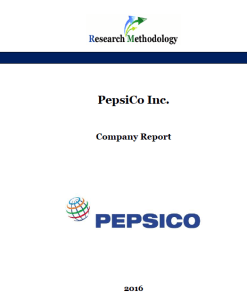
PepsiCo Inc. is a US-based global food, snack and beverage company that was incorporated in Delaware in 1919 and reincorporated in North Carolina in 1986. Today, PepsiCo brand portfolio includes a range of globally famous brand names such as Pepsi, Lays, Lipton, Doritos, Tropicana, Walkers, Miranda, Cheetos and others. In total, PepsiCo portfolio comprises 22 brands and each of these brands have generated at least one billion USD in retail sales in 2015. Products belonging to PepsiCo portfolio are consumed about one billion times each day in more than 200 countries and territories. PepsiCo’s mission statement is formulated as “to provide consumers around the world with delicious, affordable, convenient and complementary foods and beverages from wholesome breakfasts to healthy and fun daytime snacks and beverages to evening treats” The company employs 263,000 people globally, including approximately 110,000 people within the United States.In 2015, PepsiCo achieved 5 per cent organic revenue growth with a cash flow of more than USD 8.1 billion. About 53 per cent of net revenues were generated from food business, whereas net revenues generated from the beverage businesses amounted to 47 per cent. PepsiCo has major impact in the US economy. The company has been acknowledged as the Number One contributor to retail sales growth in the U.S. in 2015, generating more growth than the next 15 largest food and beverage manufacturers combined. PepsiCo Report contains the application of the major analytical strategic frameworks in business studies such as SWOT, PESTEL, Porter’s Five Forces, Value Chain analysis and McKinsey 7S Model on PepsiCo. Moreover, the report contains analyses of PepsiCo’s business strategy, leadership and organizational structure and its marketing strategy. The report also discusses the issues of corporate social responsibility. 1. Introduction 2. Business Strategy 3. Leadership and Organizational Structure 4. SWOT Analysis 4.1 Strengths 4.2 Weaknesses…
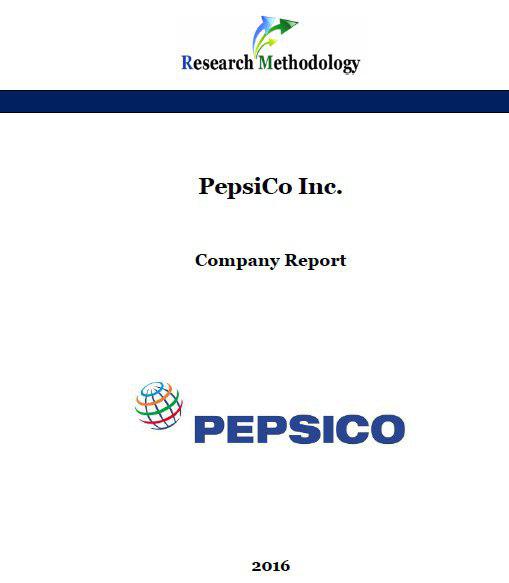
PepsiCo Inc. is a US-based global food, snack and beverage company that was incorporated in Delaware in 1919 and reincorporated in North Carolina in 1986. Today, PepsiCo brand portfolio includes a range of globally famous brand names such as Pepsi, Lays, Lipton, Doritos, Tropicana, Walkers, Miranda, Cheetos and others. In total, PepsiCo portfolio comprises 22 brands and each of these brands have generated at least one billion USD in retail sales in 2015. Products belonging to PepsiCo portfolio are consumed about one billion times each day in more than 200 countries and territories (Annual Report, 2015). PepsiCo’s mission statement is formulated as “to provide consumers around the world with delicious, affordable, convenient and complementary foods and beverages from wholesome breakfasts to healthy and fun daytime snacks and beverages to evening treats” The company employs 263,000 people globally, including approximately 110,000 people within the United States. In 2015, PepsiCo achieved 5 per cent organic revenue growth with a cash flow of more than USD 8.1 billion. About 53 per cent of net revenues were generated from food business, whereas net revenues generated from the beverage businesses amounted to 47 per cent (Annual Report, 2015). PepsiCo has major impact in the US economy. The company has been acknowledged as the Number One contributor to retail sales growth in the U.S. in 2015, generating more growth than the next 15 largest food and beverage manufacturers combined. PepsiCo Report contains the application of the major analytical strategic frameworks in business studies such as SWOT, PESTEL, Porter’s Five Forces, Value Chain analysis and McKinsey 7S Model on PepsiCo. Moreover, the report contains analyses of PepsiCo’s business strategy, leadership and organizational structure and its marketing strategy. The report also discusses the issues of corporate social responsibility. 1. Introduction 2. Business Strategy 3. Leadership and Organizational Structure…
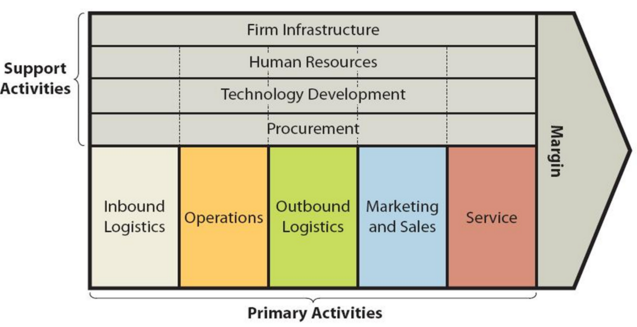
Value chain analysis is an analytical framework that can be used to identify business activities that can create value and competitive advantage to the business. Figure 1 below illustrates the essence of value chain analysis. Figure 1 BMW Value chain analysis Primary Activities Inbound logistics BMW Group has around 13,000 suppliers located internationally[1]. BMW adds value in its inbound logistics primary activity via minimizing transportation costs and sourcing the raw materials of the highest quality. As it is illustrated in Figure 2 below, the company purchases most of its raw materials from Germany (42.6%) and Eastern Europe (19.7%). This is because the majority of manufacturing and assembly units are based in Germany and Europe and the company purchases from trusted suppliers in close proximity in order to reduce the costs of logistics and ensure an undisputed supply. Figure 2 Regional mix of BMW purchase volumes[2] Operations BMW Group is divided into the following four business segments: Automotive. In 2015, this segment generated the gross profit margin of 17.7 per cent. Motorcycles. Gross profit margin in motorcycles segment in 2015 amounted to 22.5 per cent. Financial Services. This segment deals with providing credit financing and leasing for BMW Group brand cars and motorcycles to retail customers. Gross profit margin in financial services segment equalled to 13.3 per cent in 2015. Other Entities. In 2015, this segment generated EUR 211 million profit before tax, which is EUR 57 million higher than the previous year. BMW runs a complex manufacturing network in 30 sites in 14 countries[3]. The company opened its latest engine plant in Shenyang, China in January 2016. In terms of sales BMW Group is represented in more than 150 countries worldwide. BMW Group adds value to its operations primary activity mainly via the use of robotics technologies to a considerable…
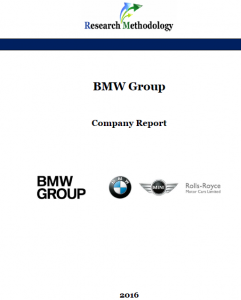
Bayerische Motoren Werke Aktiengesellschaft (BMW AG) is the parent company of the BMW Group, a global automobile manufacturer and seller based in Munich Germany. Originally founded as Bayerische Flugzeugwerke AG (BFW) in 1916 the company has emerged as one of the leading brands in the global market of luxury cars. BMW Group owns famous BMW, MINI and Rolls-Royce Motor Car Limited brands. In 2015 the company sold its products to more than 2.2 million people in more than 150 countries, an increase of 6.1 per cent compared to the previous year. BMW Group generated more than 93 billion EUR revenues in 2015, a significant increase of 14.6 per cent compared to the previous year. BMW net profit in 2015 increased by 10 per cent to around 6.4 billion EUR. The company employs 122,244 people globally and it has a hierarchical organizational structure. BMW Group operations are divided into four business segments: automotive, motorcycles, financial services and other entities. The company has 30 manufacturing sites in 14 countries and robotic technology plays an instrumental role in BMW manufacturing process. BMW Group pursues product differentiation business strategy and differentiates its vehicles on the basis of design, performance and advanced features and functionalities. Moreover, high level of integration of information technology and internet, as well as, electromobility represent solid grounds of BMW Group competitive advantage. At the same time, BMW Group has certain weaknesses that include a lack of portfolio diversification with only three brands, a high level of vulnerability to economic crises due to the premium pricing strategy and the lack of strategic partnerships with other businesses within and outside of automobile industry. BMW Group Report contains the application of the major analytical strategic frameworks in business studies such as SWOT, PESTEL, Porter’s Five Forces, Value Chain analysis and McKinsey 7S Model…
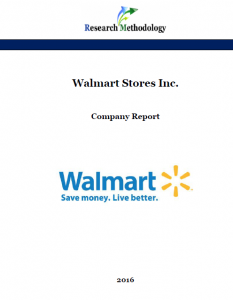
Walmart Stores Inc. is a US-based global discount supermarket chain that has more than 11,000 stores in 27 countries and serves nearly 260 million customers each week under 72 banners (Annual Report, 2015). Founded in 1962 by Sam Walton, today Walmart employs 2.2 million people globally and it is the world’s largest retailer. Walmart U.S. delivered net sales of USD 288 billion, a more than 3 percent increase in the fiscal year of 2015 and consolidated fiscal revenues equaled to USD 486 billion (Annual Report, 2015). During the fiscal year of 2015 Walmart revenues grew by more than USD9 billion to nearly USD 486 billion and earnings per share were USD 4.99, a nearly 3 percent increase from the previous year . On a constant currency basis, net sales surpassed USD 141 billion, while operating income increased to more than USD6 billion (Annual Report, 2015). ‘Everyday low prices’ is Walmart’s marketing communication message and this message serves as a guiding principle for Walmart business strategy. Specifically, Walmart strives to achieve cost leadership by the use of economies of scale to a great extent, exercising its huge bargaining power in dealing with suppliers and paying low wages to employees. Walmart Report contains the application of the major analytical strategic frameworks in business studies such as SWOT, PESTEL, Porter’s Five Forces, Value Chain analysis and McKinsey 7S Model on Walmart. Moreover, the report contains analyses of Walmart’s business strategy, leadership and organizational structure and its marketing strategy. The report also discusses the issues of corporate social responsibility. 1. Introduction 2. Business Strategy 3. Leadership and Organizational Structure 4. SWOT Analysis 4.1 Strengths 4.2 Weaknesses 4.3 Opportunities 4.4 Threats 5. PESTEL Analysis 5.1 Political Factors 5.2 Economic Factors 5.3 Social Factors 5.4 Technological Factors 5.5 Environmental Factors 5.6 Legal Factors 6. Marketing Strategy…
Theory can be defined as “a formal logical explanation of some events that includes predictions of how things relate to one another”[1]. Concepts are “collectives used to label certain bits of experience. In other words, they are elementary constructs by which reality is classified and categorised”[2]. Alternatively, concepts are “mental constructs or images developed to symbolise ideas, persons, things, or events”[3] Model can be defined as “a set of ideas and numbers that describe the past, present or future state of something”[4] A framework is “a system of rules, laws, agreements, etc. that establish the way that something operates”[5] A tool is “a thing used to perform a job”[6]. There are many theories, concepts, models, frameworks and tools in the area of business that you will have to use at some stage of your studies. The following are the most popular ones listed in alphabetical order: Change Kotter’s Eight Steps Model Lewin’s Force-Field Theory of Change Lewin’s Model of Change Consumer behavior Behaviorist approach to consumer behavior Cognitive approach to consumer behavior Consumer buyer behavior Consumer decision making process Customer perceived value Economic Man approach to consumer behavior Model of Goal Directed Behavior Psychodynamic Approach to consumer behavior Theory of Trying Corporate Social Responsibility Approaches to CSR Carrol’s CSR Pyramid Code of Ethics Culture Cross-cultural competencies Cross-cultural management Elements of organizational culture Harrison’s Model of Culture Hofstede’s Cultural Dimensions Trompenaars and Hampden-Turner Cultural Dimensions Economics Foreign Direct Investment Inter-industry and intra-industry trade Liberal and coordinated market economies Specialization for developing countries Theory of absolute advantage Theory of comparative advantage Human Resources Management Cognitive Theory of Training Transfer Continuous Professional Development Equity Theory of Motivation Employee training and development Forms of training transfer Frederick Hertzberg’s Two Factor Theory Hertzberg’s Motivation and Hygiene Factors Honey and…
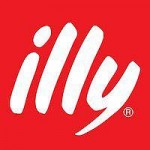
Porter’s (1985) value chain analysis illustrates the manner in which various business activities relate to the competitive advantage of firms. The model divides business activities in primary and support activities. Primary activities deal with the delivery of products in a direct manner, whereas the main aim of support activities relate to increasing the levels of effectiveness of various business processes. Primary Activities Inbound logistics include activities associated with bringing and storing of all external materials. For Illy, this comprises harvesting, parchmenting, quality control and purchasing within countries where the coffee beans are grown, shipping the beans in bags to company plant in Trieste, Italy. Expenses associated with inbound logistics account for significant amount due to the large distance between operations plant in Trieste and purchasing plants in Africa, Asia and Latin America continents and this can be specified as one of the major factors causing the levels of overall costs to increase. Within the scale of ‘Illy’s and Boos Cupcakery’ specific branch, on the other hand, inbound logistics involve the delivery of necessary products and ingredients on a daily basis, according to the order sent by the shift manager on the previous day. Operations relate to the ways in which outputs are created out of inputs. Illy operations mainly include blending, roasting and packaging coffee beans in company plant in Trieste. Basically, internal operations consist of a set of consequent processes as a result of which coffee beans in bags are turned into packaged products in paper packages and metal cans depending on the nature of each individual product. In case of ‘Illy’s and Boos Cupcakery’ in Bristol operations involve physical preparation of coffee and other beverages and food within the store. Outbound logistics activities include all activities involved in sending ready products to consumers. Illy products…
